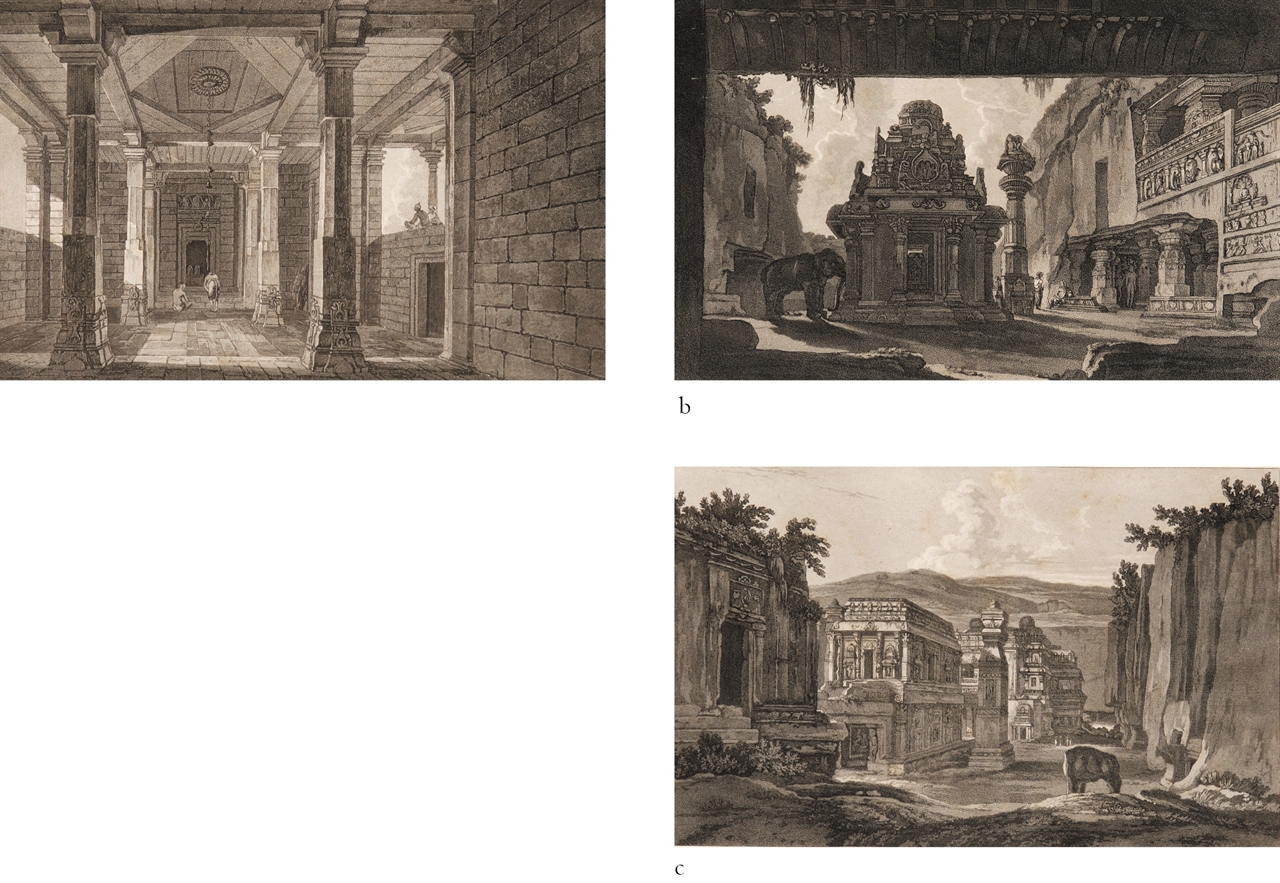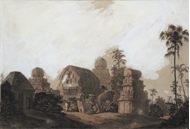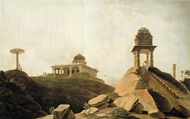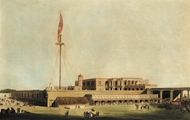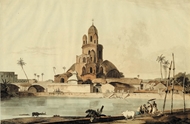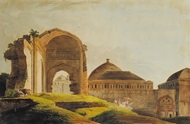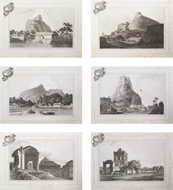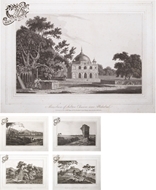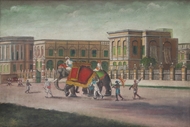![]() Mystery of Chickpet
Mystery of Chickpet
![]() Mystery of Chickpet
THOMAS DANIELL and WILLIAM DANIELL
Mystery of Chickpet
THOMAS DANIELL and WILLIAM DANIELL
RELATED LOTS
CONTACT US
Catalogue & Viewing
Lot Closed
Accounts & Shipping
Lot Closed
-
Details
 Details
Details
Three different original aquatints; depicting views of 1) “Part of the Interior of a Hindoo Temple at Deo in Bahar” 2)”View of Indra Sabha looking outwards” 3) “S.W.View of Kailasa”. From 'The Oriental Scenery' published by Thomas & William Daniell, No 9 Clevland Street, Fitzroy Square, London, Feb 1816.
-
Literature
 Literature
Literature

Thomas Daniell came of humble origins: his father, John Shepard Daniell, was lessee of the Swan Inn at Chertsey which was owned by a local family of Mercers and Drapers named Chapman. Thomas had started life by assisting his bricklayer brother but in 1763 he was apprenticed to a coach builder, Mr. Maxwell, where he learnt elementary skills of painting. In 1770, after completing his apprenticeship, he worked for several years for Charles Cotton, coach painter to George, during this time, however, he must have felt an urge to become a professional artist; for in 1772 he exhibited a flower painting at the Royal Academy exhibitions. It is clear that he had not yet decided what type of painting to concentrate on. He exhibited flower pieces, a portrait, a dog portrait and illustrations of literary subjects drawn from Spencer's Fairy Queen. In 1781 he secured a useful commission for six paintings of West Wycombe Park from its owner. Competition was stiff and minor artists were often forced to lower their sights and become miniature painter or engravers; it was not surprising that Daniell was finding it difficult to establish himself. Moreover he had heavy family responsibilities. His brother, who had succeeded their father as landlord of the swan, had died in 1779 leaving a window who carried on the business but, with five children, was finding life hard. Thomas, probably in order to help her, took over the responsibility for his nephew William, who accompanied him to London and began to help him in his painting.
Later in 1784, therefore, in view of all these difficulties, Thomas Daniell sought permission to get to India as an engraver, as it was well known that there was a great shortage of engravers in the Indian presidency towns and Daniell may have thought that he could earn a modest income by this means in Calcutta. While settling down to explore the market there, he may also have already conceived the idea of producing a series of engravings of Indian subjects. The East India Company knew well that the size of the British population in India who could afford to patronize artists was small. The company did not want to find itself responsible for dropouts who needed to be supported or repatriated. For this reason it closely scrutinized all applications and reliable sureties had to be provided by every artist.
The Company specified that no more artists should be permitted to proceed to the East Indies this season. Knowing this, Daniell may well have decided that he had more chances of being allowed to go if he described himself as an engraver.
A short time after submitting his own application he also sought permission to take with him, as an assistant, his nephew William, now aged fifteen. On 1st December 1784 his own application was approved by the Court of Directors and ten days later permission was given for William to accompany him.
-
Notes
 Notes
Notes

Non-Exportable
